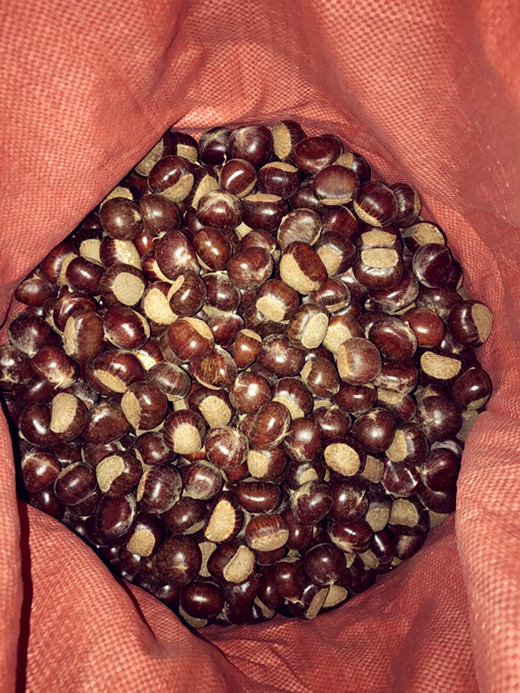In recent years, the wild resources of Huanghua have been severely damaged, resulting in the shortage of fresh or dried products of Huanghua in the international and domestic markets. At present, the artificially-cultivated Astragalus membranaceus grows rapidly, but most of them are in the traditional coarse-grained type, resulting in low yields, low commodity rates, and insignificant economic benefits. In order to obtain high yield and high efficiency in the breeding of Astragalus membranaceus, the author summarized the technique of intensive cultivation and fattening of Astragalus membranaceus based on many years of production practice.
1 The construction of Dianchi Lake should select Dianchi Lake where the water source is sufficient, the drainage water is convenient, and no pollution is found. The Dianchi Lake is built with red bricks or stones, and the grout is plastered, and the smoothness of the Dianchi Lake is preferred. Each pond has an area of ​​10 to 15 为, which is suitable for intensive cultivation. The depth of the pool is 60 to 80 cm. The inside of the pool wall is built to prevent intruding from the inward projection. The bottom of the pool is yellow clay loam, and the rammer hammer is strong. The bottom should be of the pot bottom type, with the drain at the bottom of the pool and the drain at the bottom of the pool. According to the size of the Dianchi Lake, the inlet pipe can be used with 8 to 12 steel pipes with a diameter of 1.8mm, installed on the pool wall in the same direction (with an angle of 15 degrees to the pool wall), and 40cm above the bottom of the pool. The overflow was installed above the pool, and the water surface was 20cm30cm. The grid was made of 20 mesh nylon cloth. The newly built Dianchi Lake is filled with water. After 4 to 5 days, it is drained and reinjected with fresh water. Repeatedly 2 to 3 times, the alkalinity of the cement on the walls can be eliminated.
2 Selection and stocking of seedlings At present, the main sources of seedlings are divided into traps and market purchases, and require the selection of dark yellow, black spots, and disease-free, normal-acting seedlings. When the individual size of the eel seedlings differs greatly, in order to prevent the phenomenon of eating too much, the eel seedlings will be screened according to the three levels of large, medium, and small, and placed into the pool for feeding. Before stocking, 3% saline should be used to dip and wash the seedlings for 10 minutes. The stocking capacity is 8 to 10 kg/m3, combined with a small amount of muddy fish in a polyculture, which can not only eliminate the residual bait in the pond, but also prevent the fever of the jaundice.
3 Feeding management
3.1 feeding bait seedlings began to feed on the second day of the pond, carp eats live babbles, small fish shrimp, mealworms, cocoons, maggots and other animal baits, but in normal production, such a large number of fresh The bait is difficult to guarantee supply. To do this, we must adopt a method of domestication. The domesticated food of Astragalus must be picked up from an early stage. It is generally 20 days after the Astragalus seedlings are planted in the pool. After adapting to the new living environment, they begin to tame their food. The specific operating procedures for tame-breeding are: early use of fresh tadpoles, mealworms, and cocoons Such as twisted meat slurry evenly mixed into the soft-shelled turtle or squid feed according to the proportion of 20%, feeding, before tame food is best to stop 1 to 2 days, tame food better. After successful taming, the proportion of animal diets can be gradually reduced and fed in accordance with the scientific method of "Four Ding" according to the habits of the quail in the evening; feeding can be done in the evening (18 to 19 o'clock in the afternoon) and In the early morning (5 to 6 o'clock), the feeding is performed at 2 times. Each feeding amount can often be flexibly controlled with reference to the water temperature in the pool. When the water temperature is 14 to 20°C, the feeding amount is 3% to 5% of the body weight, and when the water temperature reaches 20 to 28°C, the amount of feeding is It is 7% to 10% of its body weight; in the period of vigorous growth, the amount of bait must meet the feeding needs of Astragalus membranaceus. For example, if the bait is fed in the evening, it is better to eat it in the evening and not to stay overnight. Otherwise, it will waste food and pollute it. Water quality; such as lack of food will lead to mutual gluttony can eat, affect production. Animal food must pay attention to freshness, artificial diet should pay attention to the comprehensive nutrition, prevent mildew deterioration. Each Dianchi Lake can use cement plates as bait stations 2 to 3, and feed the baits on the bait stations.
3.2 Water Quality Adjustment Intensive eel, water quality regulation is the key. The water depth of Dianchi Lake is about 30cm. It requires fresh and clean water, adequate dissolved oxygen, and pH value of 6.8-7.8. In order to regulate water quality, the water is periodically replaced every 3 to 4 days during the initial stage of cultivation (ie from early April to early June). 1/3. After the middle of June, it is a period of vigorous growth. With the growth of individuals, the increase in food intake and the large amount of excrement deposited can easily contaminate water quality. In addition to the regular replacement of pool water, it is also required to maintain the pool. There is often running water to promote rapid growth and development. When the pool water is changed, the inlet and outlet pipes are opened at the same time (the drain pipe is used as a bar screen) to make the water in the pool rotate, and some residual baits and excrement in the pool are concentrated from the drainage. I discharge. In the summer/autumn heat season, in order to prevent sudden changes in water quality, appropriate amount of water hyacinths, water lettuces, or water peanuts are put in Dianchi Lake, and a bamboo frame is used to control 1/3 of the pool water surface. In order to adjust the pH value in the water body, lime slurry with a concentration of 0.7 g/m3 is sprinkled every 15 to 20 days.
3.3 Graded rearing After 1 to 2 months of feeding, the individuals in the same pond have irregular spots. If they continue to raise in the same pool, they will inevitably appear to eat too much and thus affect the survival rate. Grading culture. The specific operation method is: the different size of the carp is classified and transferred into different fish ponds, and is bred and bred for 2 to 3 times in one year, so that individual individuals in the diurnal pool tend to be the same. The commodity rate can reach more than 90%.
4 Disease prevention and treatment
4.1 Fever disease The disease is mainly caused by excessive stocking density, large amounts of mucus secreted on the surface of the carcass, and accelerated decomposition of microorganisms in the water body, which is caused by consumption of dissolved oxygen in the water and heat generation. If the condition is serious, the whole carp will be tangled together to form a lump, and 2~3kg of mud will reduce the incidence of this disease. If this disease occurs, the pool water should be replaced immediately and per cubic meter of water. With garlic 100g + salt 50g + mulberry leaves 150g mash into the juice evenly spilled in the pool, 2 times a day, for 2 to 3 days.
4.2 Parasitic diseases Astragalus membranaceus caused by parasites mainly capillary hairyworms and thorny head worms, etc., they are often parasitized in the intestine of the jaundice, drilled into the intestinal wall or intestinal mucosa, destroy the intestinal mucosa, absorb nutrients, causing the trigger bowel Congestive inflammation, obstruction of intestinal, control methods: According to each 50kg Astragalus with 5g90% crystal trichlorfon mixed feed in the feed, and even fed 6d can be cured.
Fresh Chestnut another name is Sweet Chestnut , because it`s with sweet taste. size 30-40, 40-50, 40-60, 70-90, 80-100pcs/kg, Brown color in shell, grade A, expiration date: 12months; Packing: 5 kg, 10kg in loose gunny bag or inner package : 1kg/mesh bag , 5 small mesh bags packed into a big mesh bags or 5kg / loose mesh bag or 10kg / plastic boxes. Available period: from September to December every year. we can loading 28tons/40rh container, Shipment degree:-2℃,ventilate:close,humidity:don`t set.We can supply 200tons/week,Fresh chestnut storage method:it`s must be put into cold storage,otherwise sprout will be come out.chestnut quality will from Grade A change to a inferior products.Anything to adapt to the environment preservation,Yes i agree.We also supplied Fresh Ginger ,Air Dried Ginger , Fresh Garlic , White Garlic ,red garlic. Sweet Corn , Fresh Taro , Fresh Potato , Holland Potato . Fresh Baby Mandarin, Fresh Red Grape, Fresh Pomelo , Fresh Ya Pear Chaotian Chili , Paprika Powder , Fresh Apple and so on.


Fresh Chestnut 80-100Pcs,Sweet Fresh Chestnut,Fresh Style Chestnut,Organic Fresh Chestnut
Jining Fuyuan Fruits And Vegetables Co., Ltd. , http://www.fuyuanfv.com